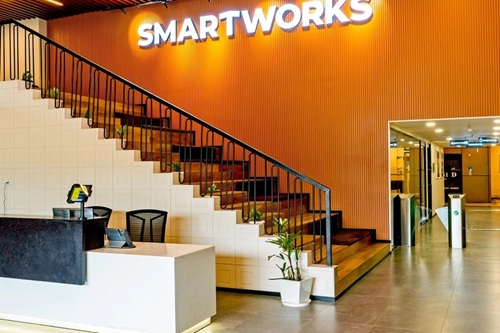
Managed workspaces have gained traction in the past decade due to their advantages of flexibility, employee wellness, and cost-effectiveness vis-a-vis traditional workspaces. Third-party workspace providers like WeWork Smartworks offer flexible workspaces, which lease these bare-shell properties from landlords and transform them into fully managed workspaces, which, in turn, are leased to enterprises.
A salient feature of managed workspaces is that they can be fully customized to meet the businesses’ requirements. These workspaces are well-furnished and equipped with state-of-the-art amenities such as a cafeteria, meeting rooms, a convenience store, a gym, a medical centre, and much more. This allows businesses to focus on core functions without worrying about costs and the hassle of operations and maintenance.
Aesthetic and functional design play a pivotal role in enhancing the quality of the workspace. In a managed workspace, the design is fully tailored to businesses’ needs as well as caters to the evolving requirements of the office segment. This article discusses the impact of design in the managed workspace.
Flexibility:
A key feature of managed workspace is the flexible lease terms, which let businesses plan their office space to meet expansion goals without being constrained by conventional leases. This feature makes managed workspaces ideal for companies that desire flexibility without being tied to a specific location.
Customized design and hassle-free move-in:
Managed workspaces like Smartworks and table space are entirely bespoke, implying that the design is fully customized to businesses’ needs. Modular design and fit-outs reduce the turnaround time in delivering these workspaces, while necessary and aspirational amenities ensure that businesses can start their operations in a hassle-free manner as soon as they move in.
Functionality:
Functional design is the cornerstone of managed workspaces. This kind of approach prioritizes the purpose of the design over its form or style. The goal of the functional workspace is to ensure that every element of a space serves the purpose and contributes to the overall function of the space. For instance, an open floor layout and provision of optimum sunlight and fresh air are crucial to ensure the well-being of employees.
Increased productivity and efficiency:
Managed workspaces are thoughtfully planned in line with the preferences of businesses. Ergonomic furniture, provision of natural lighting, and dedicated meeting and recreation zones positively impact the productivity of employees and boost their efficiency.
Increased collaboration and innovation:
Open plan layout, breakout, and collaborative zones encourage employees to gather, ideate, and brainstorm solutions. It fosters a culture of collaboration and open communication, which also impacts the workforce’s productivity.
Improved employee satisfaction and well-being:
Workspace strategy and design that prioritizes employee comfort go a long way in ensuring employee satisfaction. Flexible working conditions, open space layout, and dedicated recreation zones keep employees motivated and result in enhanced employee satisfaction and well-being.
Sustainability:
With businesses increasingly prioritizing sustainability, managed workspaces incorporate sustainable design practices such as energy-efficient lights and materials that mitigate carbon emissions and demonstrate businesses’ commitment to the environment.
Examples of Superior Design and Tech-Enabled Workspaces
Smartworks, an office experience and managed campus platform, aims to make enterprises and their employees in India more productive by providing value-centric pricing and a superior office experience. A salient feature of flex space providers like table-space, A-wfis is that they are offering modern and aesthetically pleasing designs that consider the client’s functional needs. They all have a team of design specialists across regions who leverage several technologies to maximize experience and efficiency in project deliveries.
With businesses increasingly prioritizing employee wellness, design will continue to be the differentiator of modern and tech-enabled workspaces. A superior office design is known to boost employee engagement, well-being, and satisfaction, which can go a long way in improving business outcomes.






